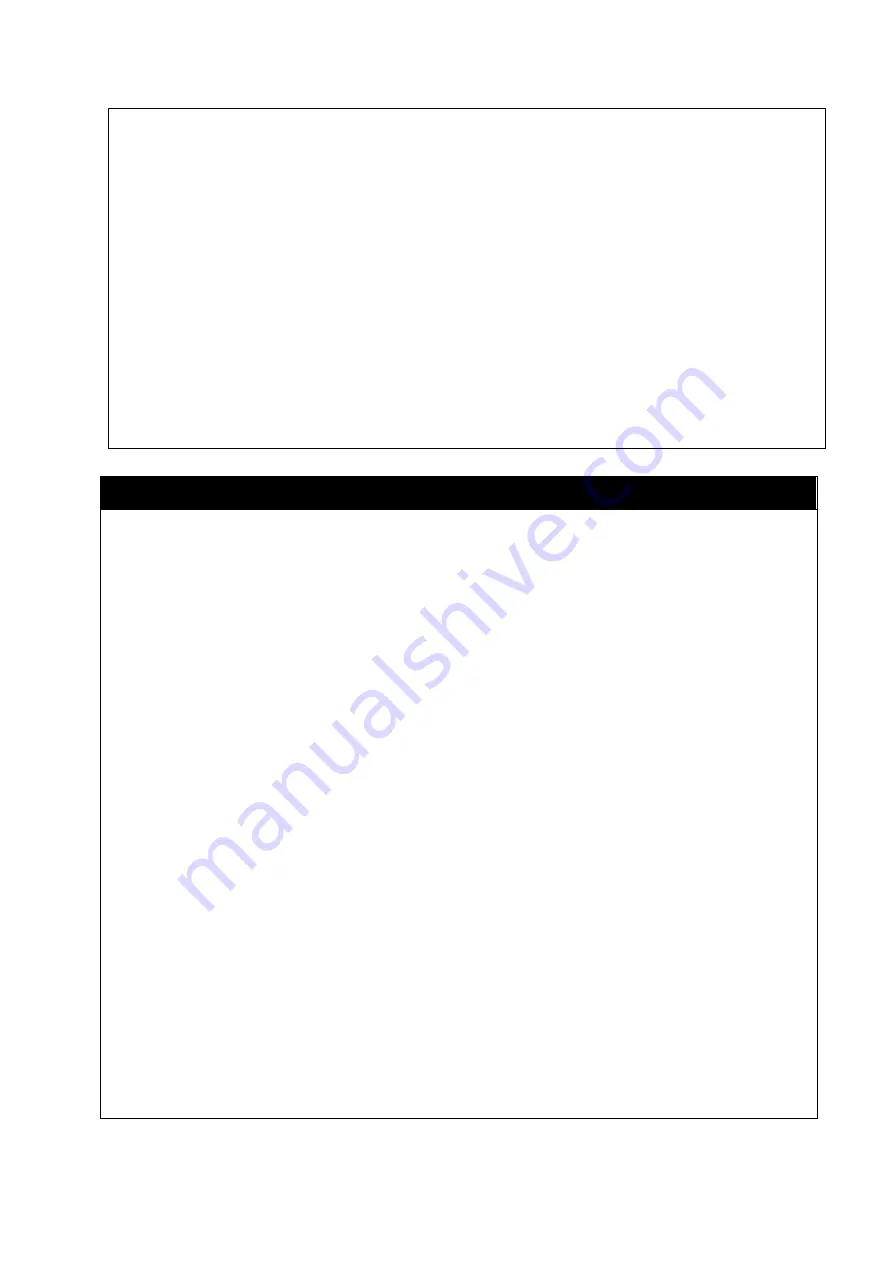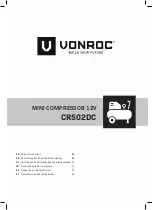
Page 6 of 23
•
Keep your work area clean and well lit. Ensure floors are not slippery from wax or dust.
•
The compressed air directly from your compressor is not safe for breathing. The air stream may
contain carbon monoxide, toxic vapors, or solid particles from the air tank. Breathing these
contaminants can cause serious injury or death. Never use air obtained directly from the compressor
to supply air for human consumption. The compressor is not equipped with suitable filters and in-line
safety equipment for human consumption.
•
Never drill into, weld or make any modifications to the air tank or its attachments. Never attempt to
repair a damaged or leaking air tank. Replace with a new air tank.
•
The air tank is designed to withstand specific operating pressures. Never make adjustments or parts
substitutions to alter the factory set operating pressures.
•
Over inflation of tires could result in serious injury and property damage. NOTE: Air tanks,
compressors and similar equipment used to inflate tires can fill small tires very rapidly. Adjust
pressure regulator on air supply to no more than the rating of the tire pressure. Add air in small
increments and frequently use the tire gauge to prevent over inflation.
⚠
WARNING
PERSONAL SAFETY
•
Stay alert, watch what you are doing, and use common sense when operating the tool. Do not use
the tool while you are tired or under the influence of drugs, alcohol, or medication. A moment of
inattention while operating the tool may result in serious personal injury.
•
Dress properly. Do not wear loose clothing, dangling objects, or jewelry. Keep your hair, clothing and
gloves away from moving parts. Loose clothes, jewelry, or long hair can be caught in moving parts.
Air vents on the tool often cover moving parts and should be avoided.
•
Wear the proper personal protective equipment when necessary. Use ANSI Z87.1 compliant safety
goggles (not safety glasses) with side shields, or when needed, a face shield. Use a dust mask in
dusty work conditions. Also use non-skid safety shoes, hardhat, gloves, dust collection systems, and
hearing protection when appropriate. This applies to all persons in the work area.
•
Work in an area with good cross ventilation. Read and follow the safety instructions provided on the
label or safety data sheets for the materials you are spraying. Always use certified safety equipment:
NIOSH/OSHA respiratory protection or properly fit-ting face mask designed for use with your specific
application.
•
Do not overreach. Keep proper footing and balance at all times.
•
Remove keys or wrenches before connecting the tool to an air supply, power supply, or turning on the
tool. A wrench or key that is left attached to a rotating part of the tool may cause personal injury.
•
Secure the work with clamps or a vise instead of your hand when practical. This safety precaution
allows for proper tool operation using both hands.
•
Never touch any exposed metal parts on compressor during or immediately after operation. The
compressor will remain hot for several minutes after operation. Do not reach around protective
shrouds or attempt maintenance until the unit has been allowed to cool.
•
The compressed air stream can cause soft tissue damage to exposed skin and can propel dirt, chips,
loose particles and small objects at high speed, resulting in property damage or personal injury.
Never point any nozzle or sprayer toward any part of the body or at other people or animals.







































